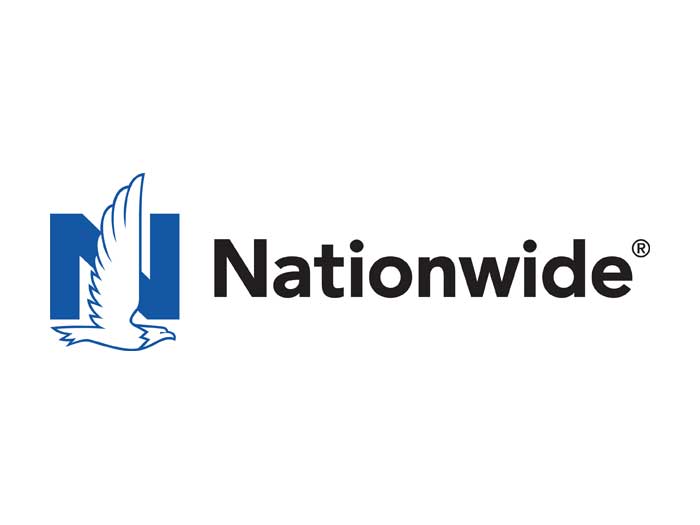Blockchain Is Here. But Can Insurance Unlock Its ROI in Meaningful Ways?

As blockchain technology matures and more players in the insurance industry integrate it into their operations, many are wondering what kind of return companies are seeing on their blockchain investments.
“That’s a very difficult question, because I actually don’t think the insurance industry broadly is using much blockchain,” said Siddhartha Jha, founder, chairman and CEO of Arbol Inc., a global climate risk coverage platform and FinTech company. “They’re still at a very early POC stage in many cases.”
David Edwards, founder and CEO at ChainThat, a London-based insurance technology provider, has a similar take.
“For individual insurers and participants, there’s no benefits, in terms of the ROI for blockchain,” Edwards said. “It must be done as a group, as a kind of a consortium, to get it going. And the only way really to get that going is to get them all to work together. That’s the biggest challenge that we’re still seeing in the insurance industry.”
But Bill Keogh, non-executive chair, The Institutes RiskStream Collaborative, expects that to change soon.
“We do ROI studies for each individual company and show them how the ROI improves over time as you get more adoption in the market. These are very substantial, multimillions of dollars of savings that persist through time as people adopt,” Keogh said.
Keogh sees blockchain adoption as intrinsically related to other new technologies.
“To the extent that the industry gets behind really good use cases, responsible use cases for AI, ML, large language models, it will naturally point them in the direction of data governance, data provenance, data security. And certainly, blockchain is one of the best ways to do that,” Keogh said, adding that “the ROI is going to be blended with all those other [technologies].”
Edwards agrees.
“Blockchain is going to provide very good, clean and up-to-date data that you can then use with AI to actually get the insight to make decisions on and use it internally,” Edwards said. “I’d look at AI as very much your internal efficiency and blockchain is going to be your external efficiency.”
But he cautions that such technologies can also compete for attention, and currently, AI is hogging the spotlight.
Looking forward, he also sees potential benefits in the intersection of high-speed quantum computing and the instantaneous connectivity of blockchain, but those technologies could also compete.
“With quantum encryption trust, you don’t need a blockchain. You can do it peer-to-peer in another way,” Edwards said. “When that becomes mature, that could change our concept of a lot of technologies, so that could disrupt the long-term benefits of blockchain.”
Blockchain Benefits … Take Your Pick
One area that could benefit tremendously from blockchain is claims management, which currently involves a lot of emails and phone calls over time.
“The blockchain solution is having a secure and permissioned network that allows the opposing insurance companies to instantaneously share information with each other, system of record to system of record, in a secure and permissioned way,” said Keogh.
But this use case is dependent on adoption of blockchain throughout the industry.
“If you have 5% of the market doing that, there’s a certain amount of value. If you have 50% of the market doing that, the value increases substantially,” said Keogh. “The ROIs are quite good as you get up into the 20% range of participation.”
Keogh cites another use case, where an ecosystem of two or three parties doing business together have an interest in sharing and exchanging data — an MGA, a carrier and a broker, for example.
“They have a better audit trail and easy access to the information for those trusted parties, and what’s great about that is you don’t have to worry about market share at that stage. You’ve got everybody around the table who matters,” Keogh said. “The ROI is immediate because as soon as they roll it out, everybody in the ecosystem is on board.”

Bill Keogh, non-executive chair, The Institutes RiskStream Collaborative
These efficiencies of blockchain could open the door to whole new products and use cases.
“The operational costs of insurance or reinsurance accounts for 20 to 30% of the actual cost of capacity, and in the case of a blockchain-based protocol, these types of costs can be significantly reduced and, in some cases, removed,” said Marco Mirabella, founder and CEO at Ensuro, a blockchain-based reinsurance company regulated by the Bermuda Monetary Authority (BMA).
“By reducing the cost of transactions, you can allow different types of use cases,” Mirabella said. “So, for instance, you’re going to have micro-insurance, which is something that I believe is going to be dominant in this space … usage-based insurance, or IoT-based insurance. You can have different types of devices that are triggering policies in an automated fashion, using smart contracts … That has previously been impossible to do, from the position of traditional (re)insurance companies, because handling that type of information or that type of product production would be impossible.”
Fraud prevention is another area where blockchain could produce benefits.
“Part of the use would be to make sure that claims data — from the start, when an adjuster gets to a place, all the way to the end — is tracked and traced in a clean way that highlights any chance of fraud very quickly,” said Jha.
Edwards cites the fraud-fighting potential of posting on blockchain “zero-knowledge proofs,” which include the details of claims but are anonymized.
“Every other party is going to be able to tell me whether they’ve got a similar claim coming in, or they’ve seen repeated ones,” Edwards said. “We won’t know that insurer A and insurer B and insurer C have also seen it; we’ll just know and can prove that three other insurers have seen that same claim come in or seen that type of pattern as well.”
Why Parametrics Are the Likely Adopter
One segment of the insurance industry that is particularly amenable to blockchain is parametric.
“Parametric insurance is a space that can be impacted a lot, because you have this trustless nature of grabbing the data from the outside world, and then the policies are generally binary in nature,” said Mirabella.
“So if this amount of rain hits a certain location, then it triggers a policy with this specific payout. You remove some of the time consumption and the fraud from processes that might happen in a traditional insurance product.”
The intersection of parametric and blockchain could help address a paucity of underwriter appetite in some markets; climate change-impacted property is a current example.
“Parametric is a much-needed bridge between alternative capital and getting that climate coverage gap closed,” said Jha. “Parametric … actually kind of resembles financial products outside of insurance, like a corn contract or oil contract settled on the price of oil. Here we are settling on hurricane data or temperature data. All of it resembles things that, broadly, the capital market providers are familiar with.”
According to Jha, the insurance industry is already attractive to alternative capital.
“New types of capital do want to come in, because … these markets offer diversification from interest rates and stock markets, which are becoming very correlated,” said Jha.
“So it works for both sides. But the bridge needs to be easy to cross. You need that transparency. You need to build that comfort for capital that isn’t used to how insurance works.”
According to Mirabella, declining yields on cryptocurrency investments may make the insurance marketplace more attractive to cryptocurrency investors looking for better returns. And those trailblazers may well be followed by others.
“As more new types of alternative capital and others start to move into insurance markets, we’ve seen more interest from outside capital providers to move in,” said Jha.
Smart contracts, primary insurance and reinsurance all on the same chain could also be securitized, providing liquidity that may also attract new capital.
“You have that end-to-end flow, and you could get to the point where you could start to trade at any point,” Edwards said.
“It may actually bring more capital in, because it’s actually making insurance more tradable instead of having it only at the very end, where I think today you could really only do ILS and a few other types of things.”
The blockchain would maintain the historical record of who is at risk at what point in time, should any retrospective claims come in.
Assessing the Hurdles
As with any modern technology, however, there will be challenges.
“Getting everybody to understand the need to change the current system is often a big challenge in old industries. ‘Well, why change something that’s been working?’ Maybe it’s not really working in many ways that it should be,” said Jha.
Another challenge is adopting standards.
“Getting a group of people to agree on a standard isn’t really the way. What you really need is the dominant market forces to say ‘Here’s how we’re going to transact business. And if you want this business, here’s how to use it,’ ” said Edwards, who suggests the large brokers are well situated to fill that role.
He cautions companies to be aware of the full cost of implementation.
“Let’s just say we think this blockchain solution is going to cost us a couple of million, but then I’ve got $50 million of internal change to get through,” Edwards said. “Is the investment really worth it at this stage?”
In the end, though, he argues it probably is.
“Why people are putting things on blockchain now and why you might want to adopt it now is thinking of the future, that blockchain will be widely adopted, and you’re not going to have to go back and retrofit it if you’ve got it already in place,” Edwards said. “So, when there’s more adoption, I’m there, ready and waiting to reap the benefits early on.” &











